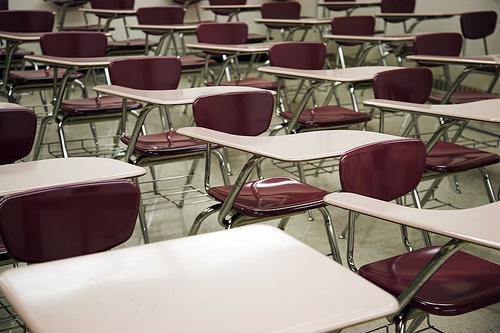The elements of dance, such as Space, Time, and Energy are not new concepts for most K-12 dance educators but are often new even to students that have been studying dance for several years in other settings.
 Dissecting these topics allows us to discuss dance performance and creation from an objective perspective, providing us with tools that can enhance our articulation of intent either as the dancer or as the informer.
Dissecting these topics allows us to discuss dance performance and creation from an objective perspective, providing us with tools that can enhance our articulation of intent either as the dancer or as the informer.
If these concepts are new to you, peruse the following brilliant articles by Stacey Pepper Schwartz for more information. Teaching Dynamics: It’s All in the Effort; Space: Inside, Outside, and Through
Teaching in the K-12 scene (and great private studios that really care about assisting the development of well-rounded people) requires that we explore dance in a larger scope than most expect.
What may not be as readily considered by the average instructor is how these concepts can facilitate larger discourse and help students connect ideas to other subjects or discussions they are having throughout their academic day and their lives.
Time is of the essence!
Journals can be used to support this development of thought and further guide class discussion. If students can organize their thoughts prior to class discussion, the flow of conversation increases and the quality of the dialogue is enhanced.
Here are some examples of how to project our dance elements onto mainstream notions important in the production of engaged citizens:
SPACE
In the studio: Exploration of performance space (organization of area including levels and relationship) and personal space (development of kinesphere)
In the classroom: These may impact self-concept, self-efficacy, self-esteem
- Location and Destinations: how might culture be reflected in these two areas and how might dance relate to those cultures or perspectives? How might social dance reflect the culture and values of the community/society? How do the norms of these places compare/contrast?
- Local and Global: how can we (individually) be locally engaged in our community? How can we as dancers (group) serve our community (see another great Stacey article…) How can we (community) have a global presence? How can we (society) share a global perspective?
 TIME
TIME
In the studio: Organization of time- Musicality, tempo, rhythm,
In the classroom: These are great for test-taking skills and/or everyday function
- Ephemeral quality of dance– it can never be replicated and is new each time,
- Ephemeral quality of life– time management, organization for efficiency, deadline
EFFORT
In the studio: Articulation of energy and clarity of intent
In the classroom: Enhancing emotional intelligence
- Articulation of goals, relationships and personal boundaries to be explored through the creative process
- Examples: What are my goals? What do I need to do to accomplish these goals? How do my relationships support these goals? How do I measure success? Who may help me in this process? How might others serve as deterrents in this process? How can I safely express my feelings through movement? Which movements best convey my meaning? Which words best convey my meaning? What do I have control over?
Through these processes, students encounter a long list of words that clarify their understanding of dance but also relate to the “real-world”.
For eleventh grade students, this world includes ACT and SAT assessments. You may also aid them in strategies for completing these tests in how you choose assignments that explore these big ideas.
In the end, you’ve used dance to make them smarter, social, and better prepared for the world they inhabit.
Heather Vaughan-Southard MFA, is a choreographer, dance educator, and performer based in Michigan. She currently directs the dance program at the Everett High School Visual and Performing Arts Magnet in Lansing. With the philosophy of teaching dance as a liberal art, Ms. Vaughan-Southard collaborates with numerous arts and education organizations throughout the state. She has danced professionally in Chicago, Detroit, Los Angeles, and New York and has performed works by Mia Michaels, Lar Lubovitch, Donald McKayle, Billy Siegenfeld, Alexandra Beller, Debra Levasseur-Lottman, and Bob Fosse. As a choreographer, her work has been credited by the Los Angeles Times for “creating heat.” She has recently choreographed for the dance programs at Michigan State University, Grand Valley State University, Lansing Community College and is the former dance professor at Albion College. She is a regular guest artist and blogger for Dance in the Annex, an innovative dance community in Grand Rapids. Heather received her MFA in Dance from the University of Michigan, BFA in Dance from Western Michigan University and K-12 certification in Dance from Wayne State University. Read Heather’s posts.

